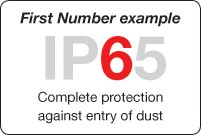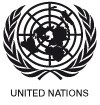The Five Types of EMI
There are five main types of EMI that you should be aware of:
Radiated Emissions – Electromagnetic noise emitted by a light through the air that can interfere with other electronics (ex. cell phones, radios, etc.).
Conducted Emissions – Electromagnetic noise conducted down a power line in a vehicle which can interfere with other electronic components on the vehicle.
Radiated Immunity – The tolerance of a light to inbound electromagnetic noise in the atmosphere. Any broadcast signal (cell phone, radio tower, non-compliant electronics, etc.) can interfere with a light if it is not properly designed.
Conducted Immunity – The tolerance of a light to inbound electromagnetic noise conducted on vehicle power lines.
Electrostatic Discharge (ESD) – As a kid, you probably experienced shuffling your feet on carpeting and touching someone to give them a shock. This phenomenon is called electrostatic discharge (ESD) and can damage any electrical component – lights included.
Component Level vs. Vehicle Level
For OEM applications, lighting manufacturers focus on testing their products at a component (light) level. This is done to make sure that the lights will not cause a vehicle level EMI failure or interfere with other electronics on the vehicle. OEMs then test at a vehicle level to ensure that it meets regulatory requirements.
Standard vs. Custom Products.
We design and manufacture both standard and custom products. For our standard products, we’ve established a set of high standards by which we design and test our products for electromagnetic compliance. For custom products, we design, test, and manufacture to meet your exact specifications. In the event that you do not have EMI specifications, we’ll provide you with our EMI standards to review and approve before we start on the design.
Testing Capabilities
SAE J1455
Load Dump (Pulse 5) (J1113/11)
Inductive Switching (Pulse 1/2) (J1113/11)
Burst Transients (Pulse 3a/3b) (J1113/11)
Starter Motor Engagement (Pulse 4) (J1113/11)
Electrical Fast Transients (J1113/12)
Chattering Relay (J1113/12)
4.13.3.4.1 Radiated Emissions (J1113-41)
4.13.3.4.4 Conducted Emissions, DC Power Leads (J1113-41)
SAE J2139
Load Dump
Inductive Switching
Mutual
ECE Reg. 10
Broadband Electromagnetic Emissions
Narrowband Electromagnetic Emissions
Immunity: ISO11452-4
ISO 7637-2 Pulses 1, 2a, 2b, 3a, 3b, 4
ISO 7637-2 Emission of Conducted Disturbances
EN 12895 Industrial Trucks Electromagnetic Compatibility
EN 55022 With Exception of the Antenna Height
CISPR 12
CISPR 22
CISPR 25
Mil STD – 461F (Army Mobile Emissions ONLY)
ESD
SAE J1113-13(SAE J1455)
ISO 10605
IEC 61000-4-2- (EN 12895)
IP Ratings
Ingress Protection Ratings
The IP Code outlines a system of classification for the protection of electrical enclosures against the intrusion of foreign bodies ( i.e. tools, fingers, dust, etc. ) and moisture. The system of classification was specified by the International Electrotechnical Commission and is officially designated as IEC 60529.
The rating is specified by the letters IP followed by two digits i.e. IP25, IP68, etc.
IP ratings (International Protection Ratings) are covered in a variety of standards used around the globe.
This system uses a two digit code to specify the degree of particle and water resistance of a luminaire.
The first digit indicates the degree of protection of the interior from the ingress of solid foreign objects.
The second digit indicates the degree of protection of the interior from the ingress of water.
First Number - Degree of ingress protection
The first number of the IP code indicates the degree of protection against contact with moving parts and the degree that the equipment is protected against solid foreign bodies intruding into an enclosure.
|
0 - No protection provided. 1 - Protection against entry of objects larger than 50 square mm. 2 - Protection against entry of objects larger than 12 square mm. 3 - Protection against entry of objects larger than 2.5 square mm. 4 - Protection against entry of objects larger than 1.0 square mm. 5 - Protection against entry of dust in sufficient quantity to prevent satisfactory operation. 6 - Complete protection against entry dust. |
 |
Second Number - Degree of moisture protection
The second number indicates the degree of protection for the equipment inside the enclosure against the harmful entry of various forms of moisture (e.g. dripping, spraying, submersion, etc.)
0 - No protection provided.
1 - Protection against drops of water falling vertically.
2 - Protection against drops of water falling vertically when the luminaire is tilted up to 15 degrees from its normal position.
3 - Protection from entry of water spray from angle of up to 60 degrees from vertical.
4 - Protection from entry of water splashes or spray from any direction.
5 - Protection from a low pressure jet of water in any direction.
6 - Protection against heavy seas or a strong jet of water in any direction.
7 - Protection against immersion up to 1 meter.
8 - Protection against submersion over 1 meter.
Our products Standard
 |
|
|
|
|
ASABE Standards American Society of Agricultural and Biological Engineers regulations for agricultural equipment.
|
|
 |
|
|
|
|
|
SAE Standards SAE International (SAE), formerly the Society of Automotive Engineers, is a professional organization for mobility engineering professionals in the aerospace, automotive, and commercial vehicle industries. The Society is a standards development organization for the engineering of powered vehicles of all kinds, including cars, trucks, boats, aircraft, and others. The SAE standards are mainly used in the US and Canada and do not recognize ECE approvals.
|
 |
|
|
|
|
|
ECE Standards The United Nations Economic Commission for Europe (UNECE) Transport Division has been providing secretariat services to the World Forum for Harmonization of Vehicle Regulations for more than 50 years. The World Forum has incorporated into its regulatory framework the technological innovations of vehicles to make them safer and more environmentally sound. Most countries, even if not formally participating in the 1958 agreement, recognize the ECE Regulations and either mirror the ECE Regulations’content in their own national requirements (ex. Australian Design Rules:- ADR’s), or permit the use and importation of ECE-approved vehicles, or both.
|
 |
|
UL Recognised Underwriters Laboratories Inc. (UL) is an independent product safety certification organization. Based in North-brook, Illinois, UL develops standards and test procedures for products, materials, components, assemblies, tools and equipment, chiefly dealing with product safety. UL also evaluates and certifies the efficiency of a company’s business processes through its management system registration programs. Additionally, UL analyzes drinking and other clean water samples through its drinking water laboratory in South Bend, Indiana and evaluates products for environmental sustainability through its subsidiary, UL Environment. UL is one of several companies approved for such testing by the U.S. Occupational Safety & Health Administration (OSHA). OSHA maintains a list of approved testing laboratories, known as Nationally Recognized Testing Laboratories.
|
||||
 |
|
|
|
|
|
CE Recognised The CE marking (also known as CE mark) is a mandatory conformity mark on many products placed on the single market in the European Economic Area (EEA). The CE marking certifies that a product has met EU consumer safety, health or environmental requirements.
|